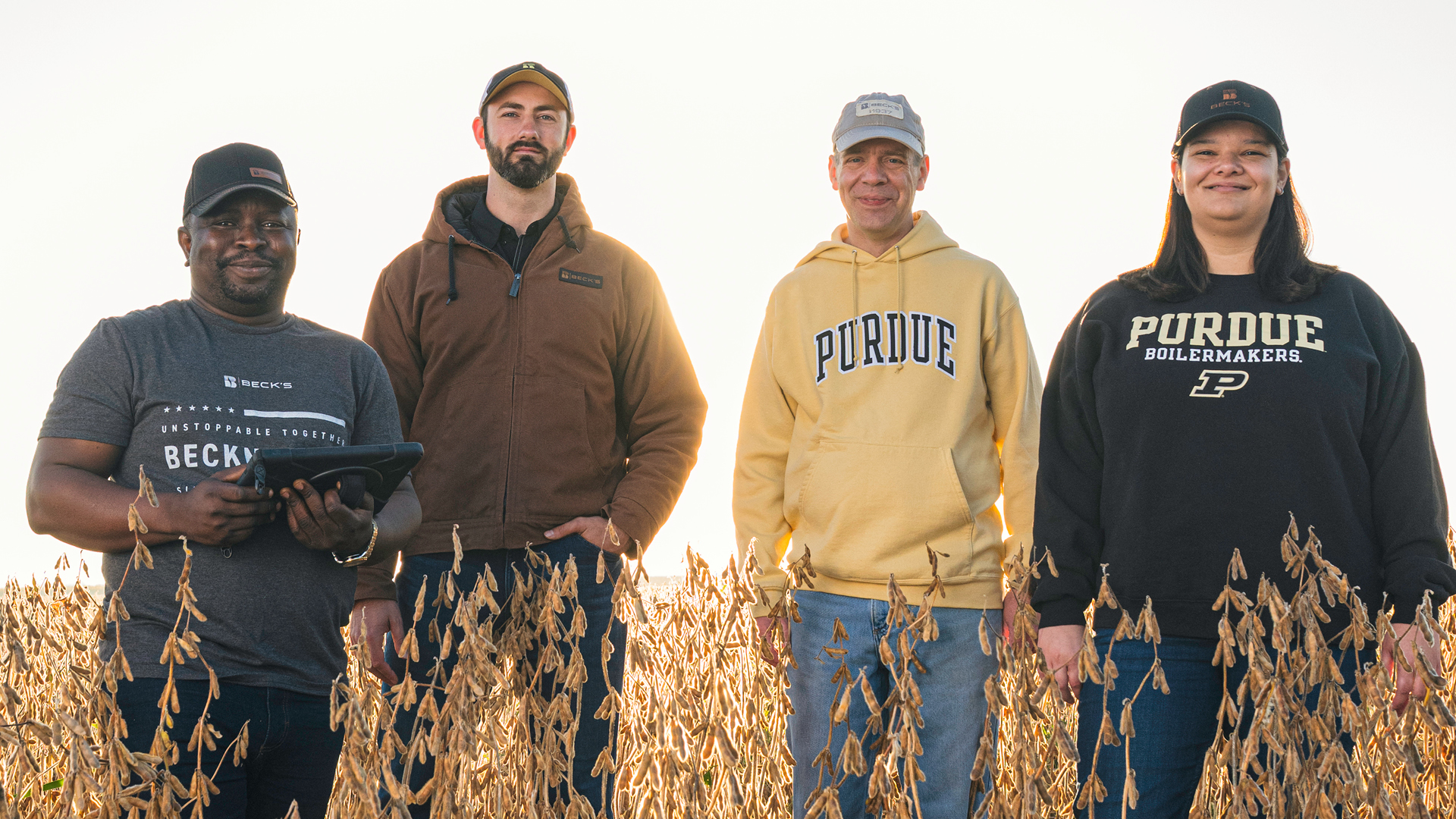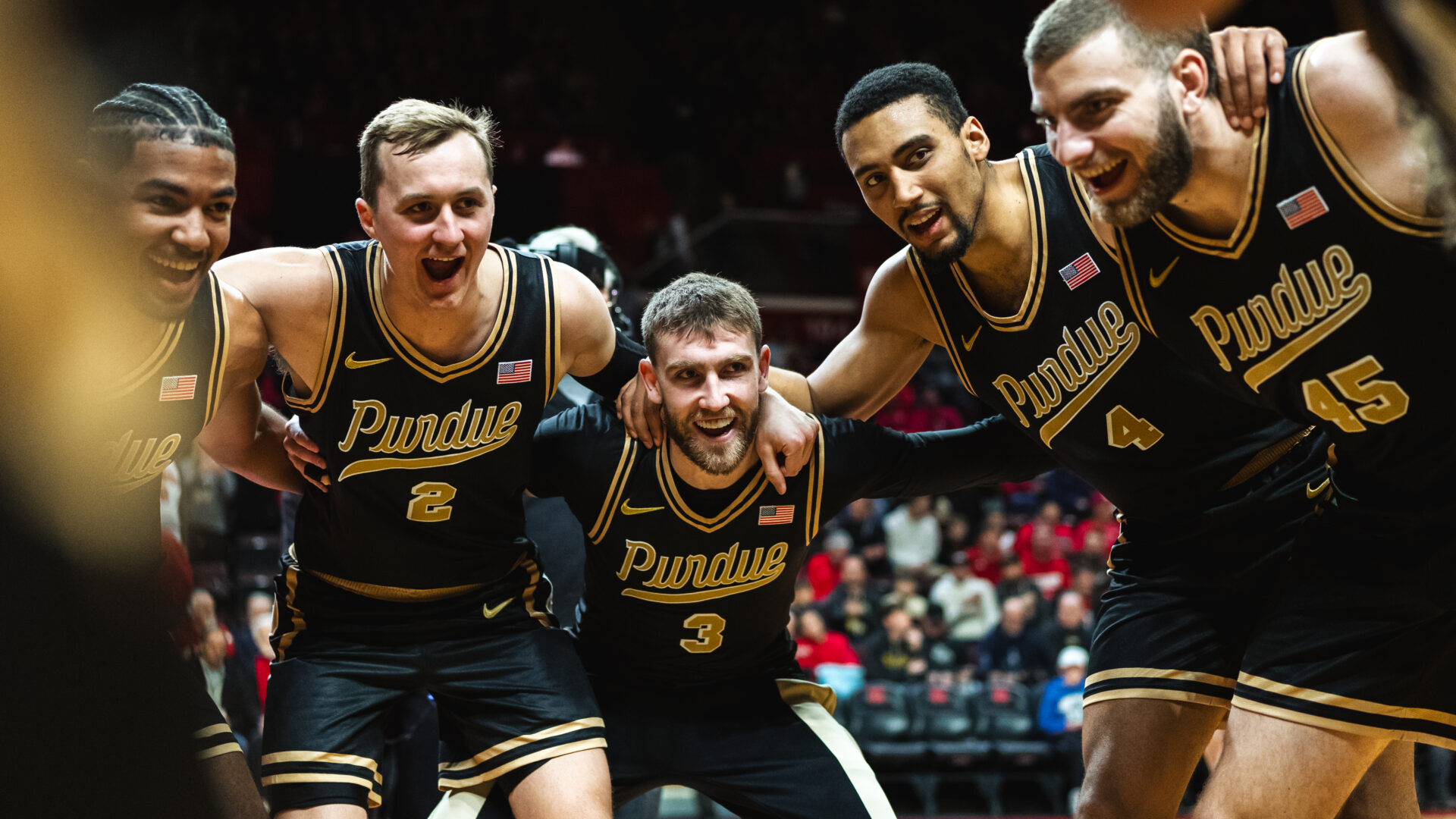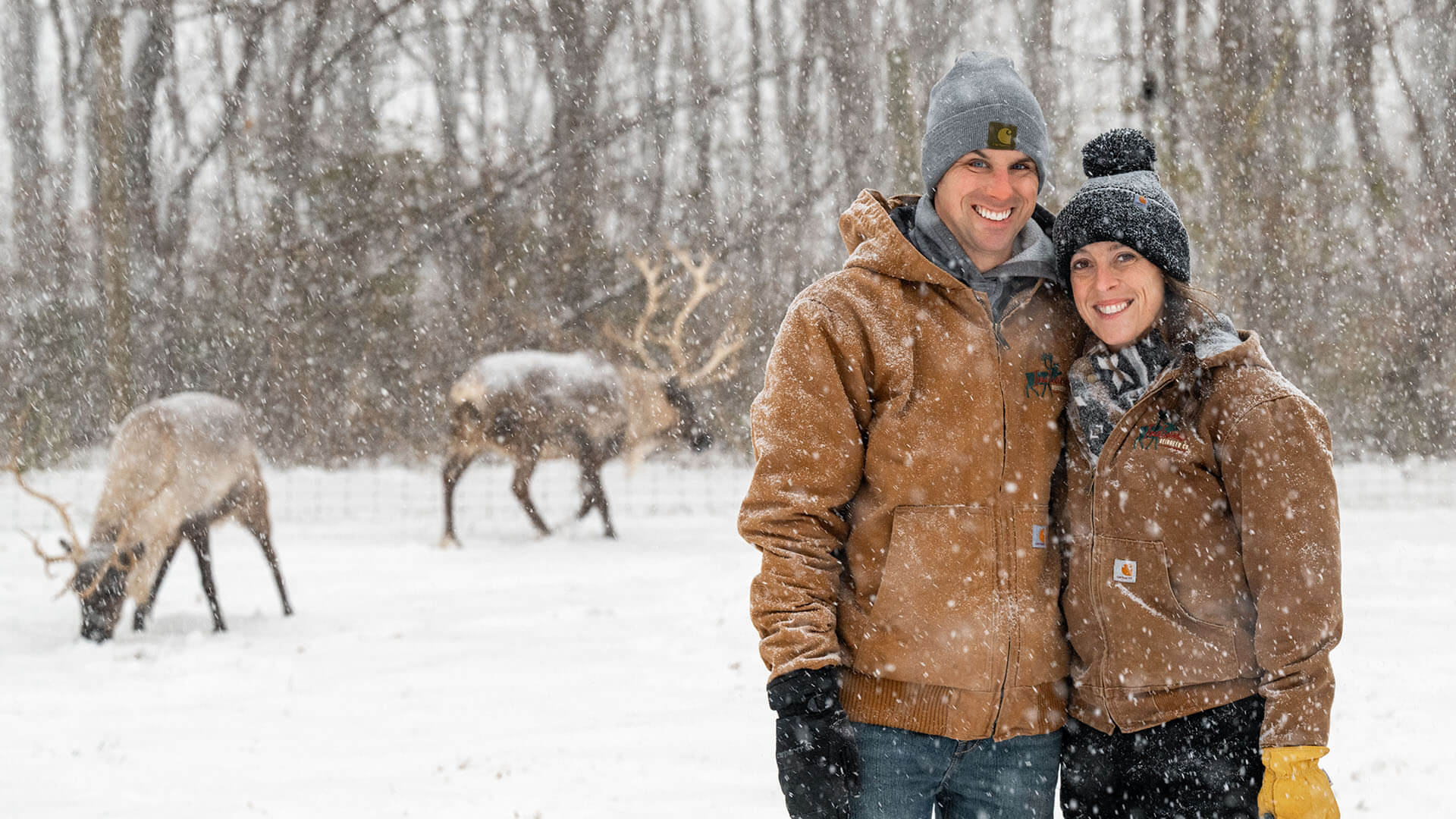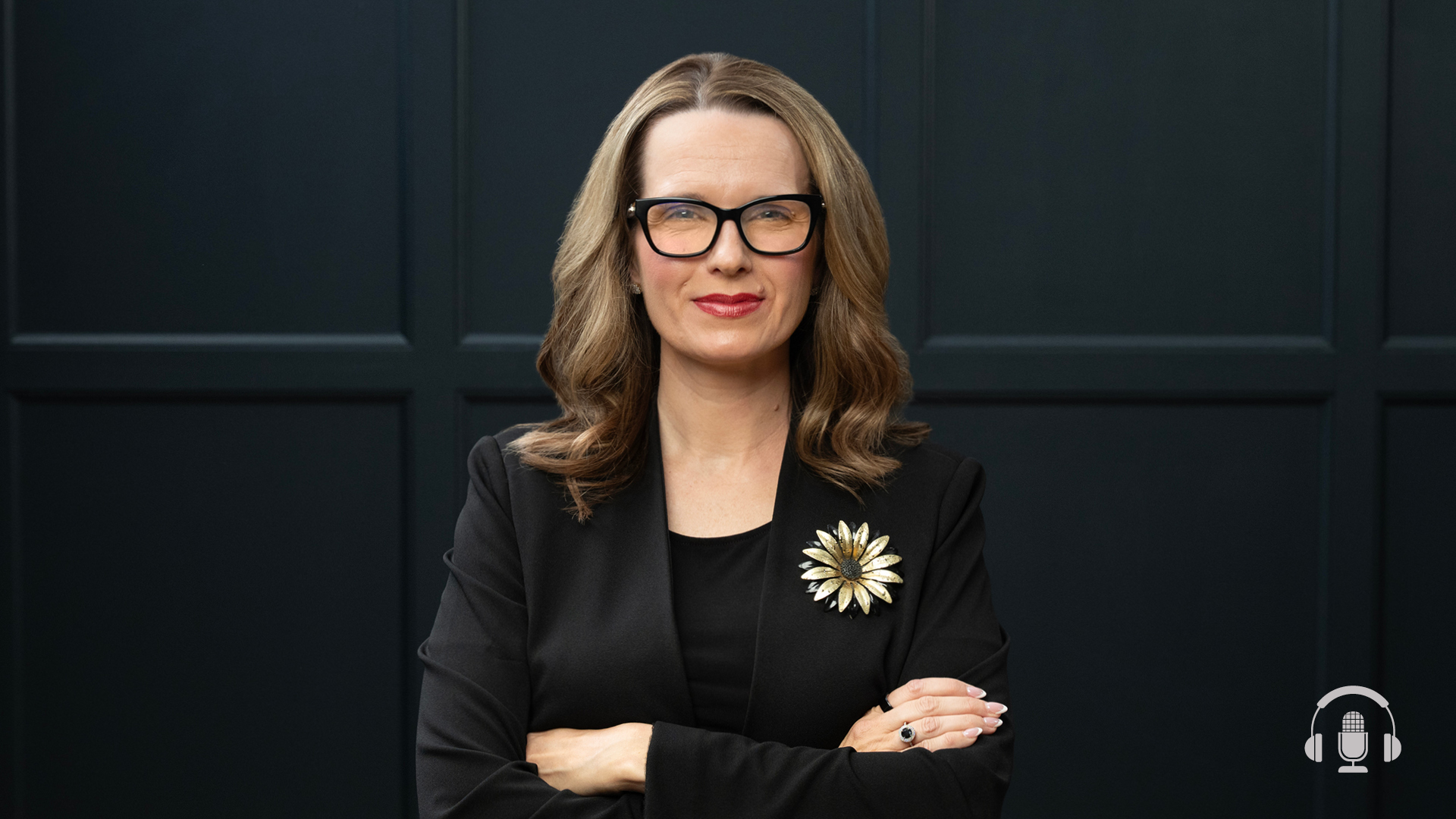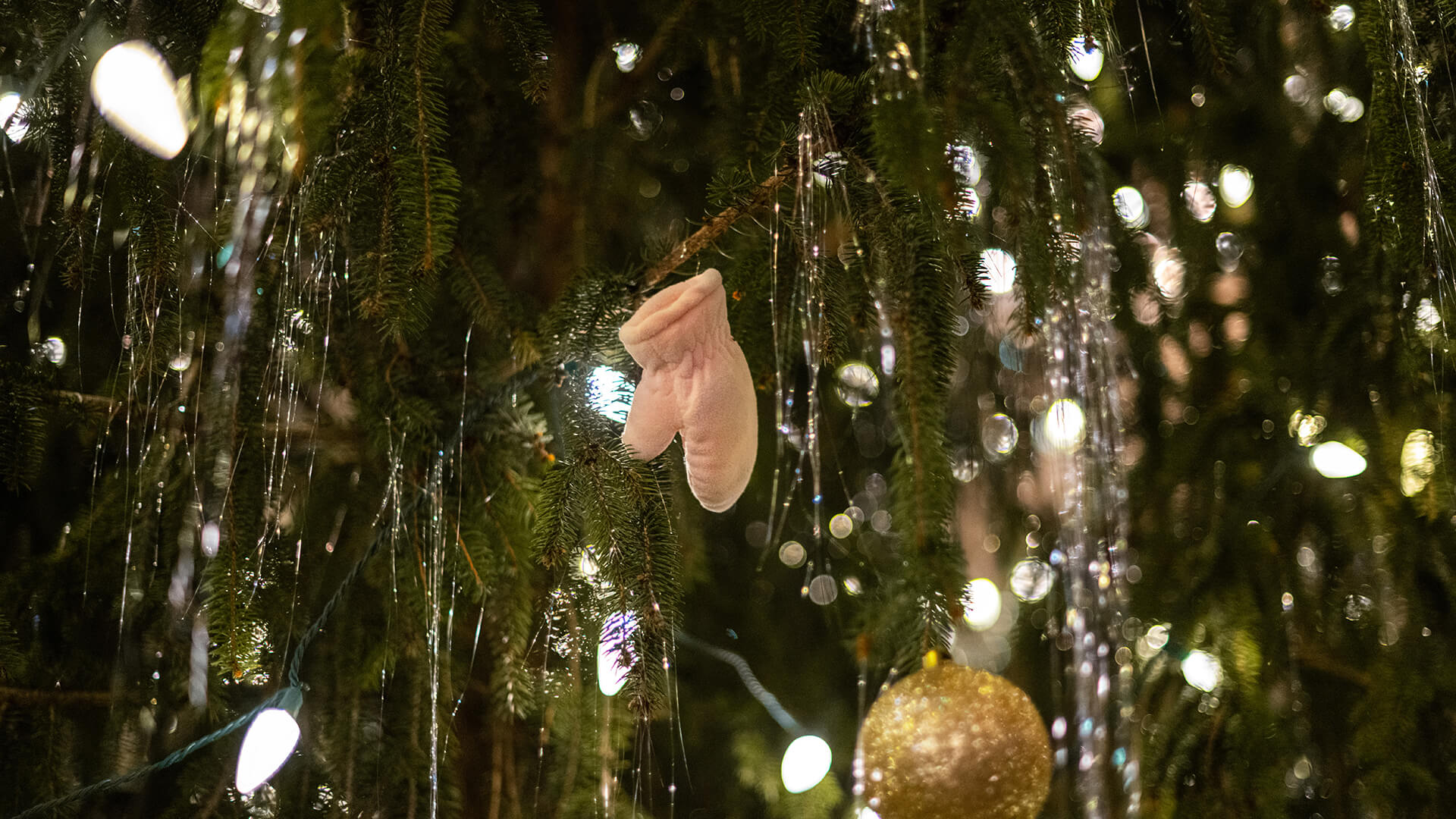U.S. Air Force Thunderbirds commander’s career took flight at Purdue
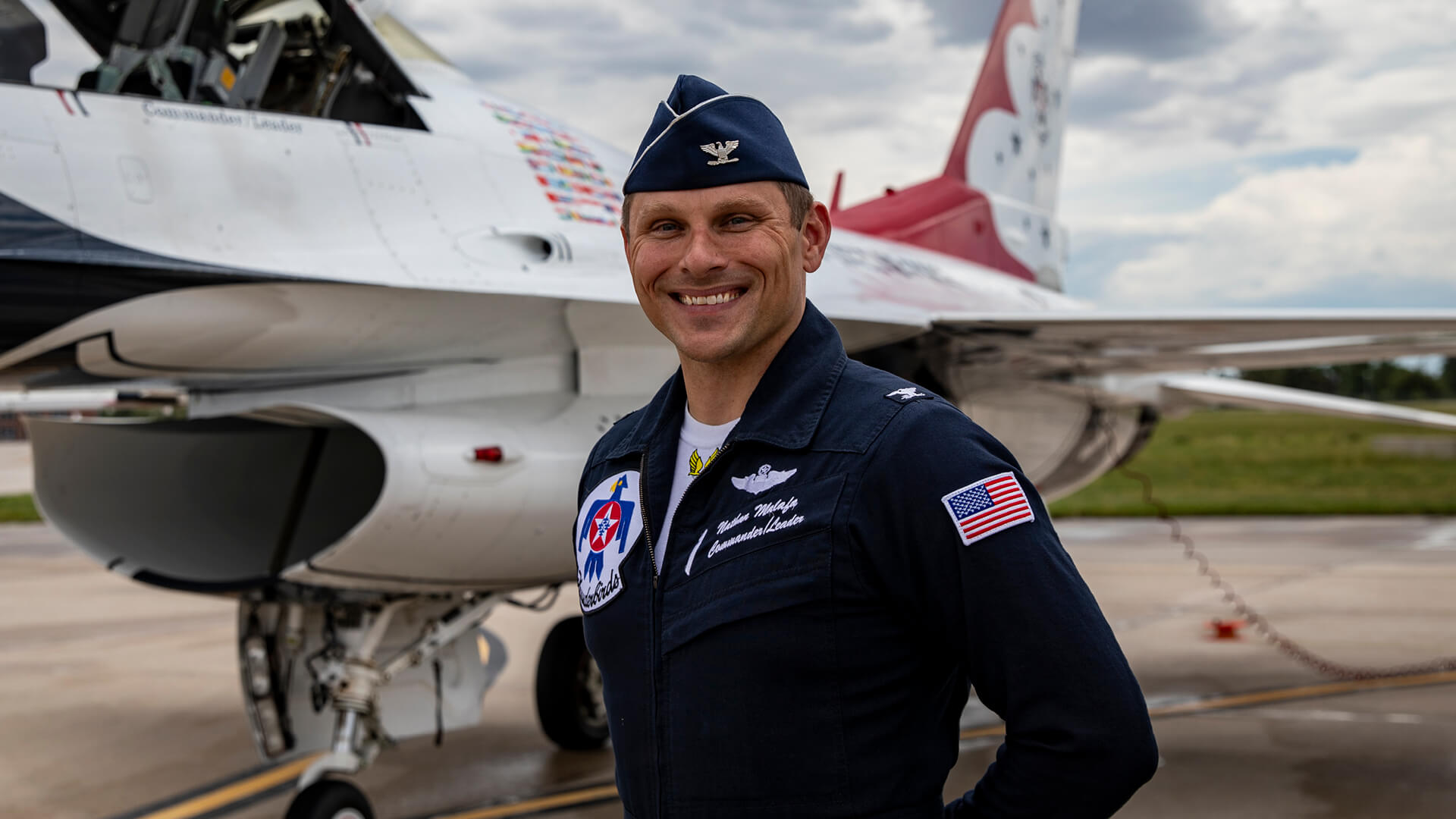
Col. Nathan Malafa’s impressive leadership and work ethic have propelled his career since his days as a Purdue Air Force ROTC cadet. (All photos courtesy of the U.S. Air Force unless otherwise indicated)
Studying aviation and being part of Air Force ROTC built the foundation for Col. Nathan Malafa’s inspiring career
When Col. Nathan Malafa was a kid, he went to an air show and was mesmerized by a fighter jet racing across the sky.
He watched it land, taxi and come to a stop. When the canopy opened and the pilot emerged, he realized it was someone’s job to fly that plane. He wanted to be that someone.
He not only achieved that dream but became leader of one of the most prestigious air demonstration teams in the world.
Malafa recently retired following the end of his tenure as commander of the U.S. Air Force Thunderbirds. Few callings require levels of technical expertise and teamwork like his did. As the pilot controlling the No. 1 jet, he was responsible for leading precision formation flying and commanding a squadron of 135 military members from around the country.
With over 3,700 flight hours in a fighter aircraft and nearly 850 combat hours, he was well prepared for the challenge. Before he became the leader of the prestigious team or served the nation from an F-15E, he was a Purdue Air Force Reserve Officers’ Training Corps cadet and had an unforgettable experience.
Shortly after retiring from the Air Force, Malafa reflected on his time at Purdue and how it paved the way for his extraordinary military career.
Q: After growing up in Michigan, how did you decide on Purdue?
A: When I was in high school, I got a pamphlet from Purdue and thought, ‘I’m not going to be an engineer. They’ll never accept me.’ But I started doing a little more research and discovered that Purdue was the intersection of everything I was looking for in a college.
Purdue’s flight program stood out for me. It also had an Air Force ROTC program, and I was able to get a scholarship with that. It was also the right distance from home — close, but not too close. I visited the campus with a friend and knew I had found my place.
Q: What did your Air Force ROTC program experience teach you?
A: Doing Air Force ROTC was a leap of faith for me. I didn’t have a huge family military background. I didn’t know a lot about it other than what I saw in the movies. What I did carry was this longtime goal of becoming a fighter pilot.
That drive to become a pilot started at an air show and seeing the amazing machines. But once I got to Purdue and started going through the program, I soon realized a strong sense of patriotism had always been there.


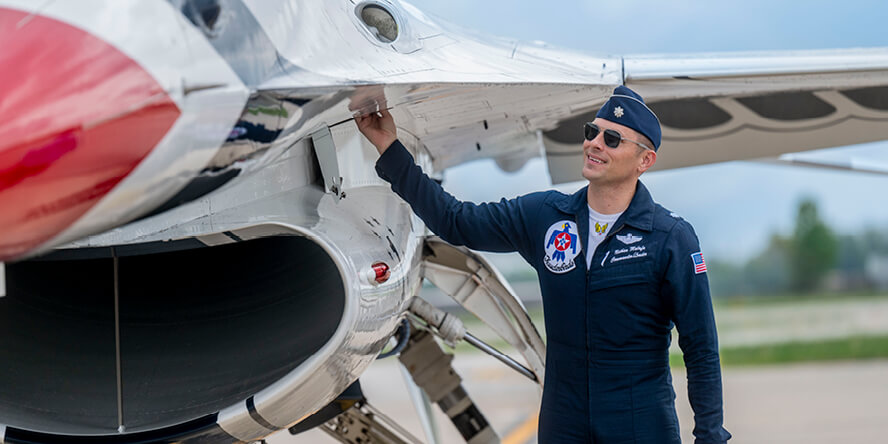

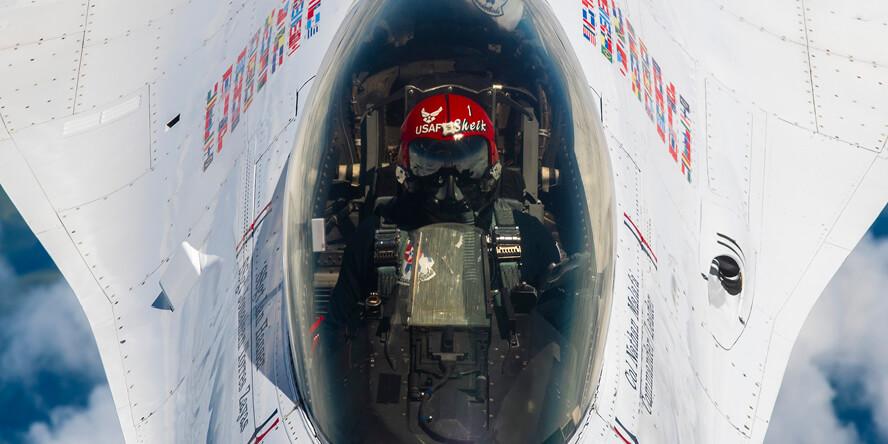
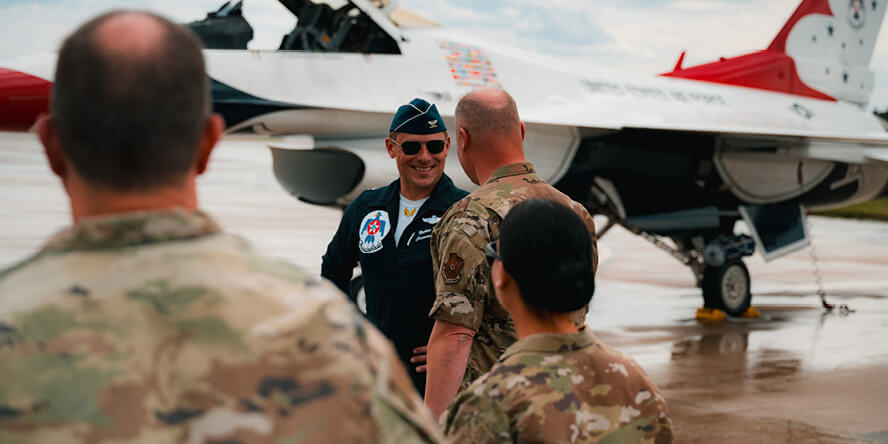
When you start reading books, understanding our history, learning about all the amazing stories of those who sacrificed everything, it nurtures this call to action. In the process, I got to know some of the most incredible people. My mentors’ dedication kept me going.
So maybe the cool jets brought me in, but it was the relationships that made this for me. I saw the long-lasting impact that you can have, and I set my course.
Q: Was Purdue’s Air Force ROTC program what you expected?
A: It was amazing. It provided opportunities not only in leadership development and classroom learning, but chances to see the world.
There were once-in-a-lifetime trips. I got to go to Africa to see the International Criminal Tribunal for Rwanda. In Arusha, Tanzania, the United Nations established a court for trials for people charged for the Rwandan genocide in 1994. It’s something I’ll always remember.
I got to go to the Air Force Academy and complete a free-fall training program, which was unique and fantastic. That was my first introduction to the type of training the Air Force does. You can take somebody who has never even thought of jumping out of an airplane and within two weeks they’ve done five solo free-fall events.
Q: Would you say Purdue built more of your technical or interpersonal skills?
A: Certainly both. Fortunately, Purdue provided two paths of learning.
From a technical standpoint, a lot of people don’t understand that if you do Air Force ROTC, it really isn’t anything about flying. I spent so much time in the air and learning about planes from majoring in aviation technology.
The ROTC side was very much about leadership. I learned a lot about myself. I developed a deeper understanding of success — it’s measured by how well your team does. What you can do individually isn’t as important as what you can do to contribute. There’s a lot of power in knowing that and applying talents to something bigger than yourself.
Q: How has that influenced your leadership style today?
A: It all comes back to people and relationships. The Thunderbirds are an incredible team and leading them is a heavy responsibility. The first thing I did when I became commander was reach back to people who have done this before.
I’m grateful for a group of mentors I can rely on. I wanted to know how this team should operate. It’s especially tricky because we only do two years as officers. Turnover and our operations tempo are both quick.
It’s critical to keep the standards high. We set the bar at perfection. You can’t achieve perfection every single time, but you’ll achieve excellence along the way.
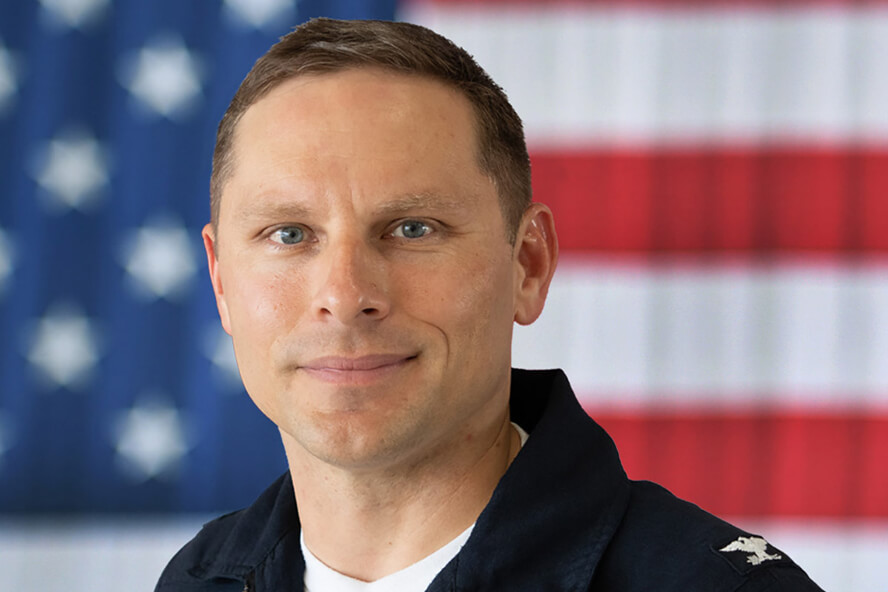
We set the bar at perfection. You can’t achieve perfection every single time, but you’ll achieve excellence along the way.
Nathan Malafa
Aviation technology ’05
Q: What was it like, for you personally, to be the commander?
A: Since I had done a lot of research and talked to previous leaders, I came into the job under no illusions about how demanding it would be. It was going to take everything. It’s a 24/7/365 job. You don’t get a chance to disconnect.
Knowing that and executing that are two different things. It’s difficult to say no to friends and family and miss life events, from weddings to picking up the kids. But that’s part of the sacrifice, and it’s what I liked about it — it’s designed to represent what all military service members do every single day.
I’m thankful for the chance to travel the country and interact with Americans who were excited to see us and the hard work we poured into demonstrations. My favorite part about the job was getting to light that spark in the next generation. I was one of those kids at an air show.
Q: Have you crossed paths with Purdue alumni?
A: Boilermakers are everywhere. I flew Strike Eagles as my first jet and one of the other squadron members was a Purdue classmate. When I transitioned to the F-35, I met a Purdue grad from my same class. There’s a worldwide network.
It’s heartwarming because there’s that immediate connection. You can talk about Ross-Ade Stadium or Cary Quad, and it’s going to bring back a lot of great memories.
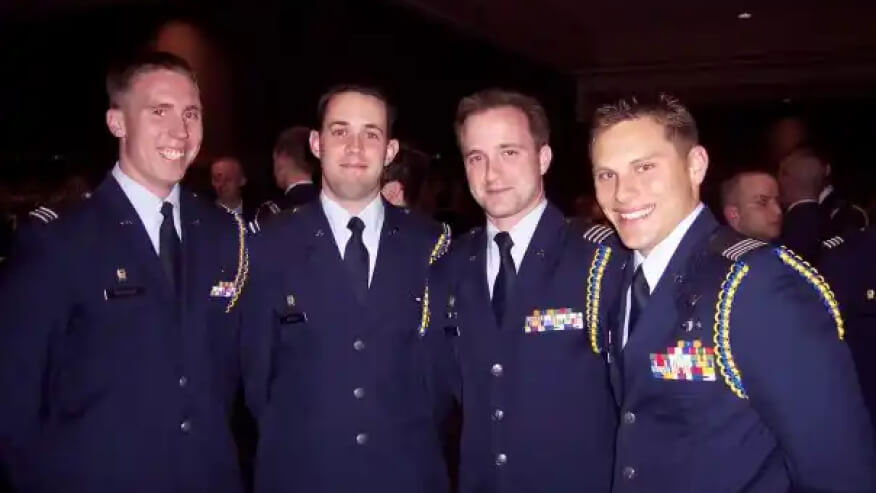
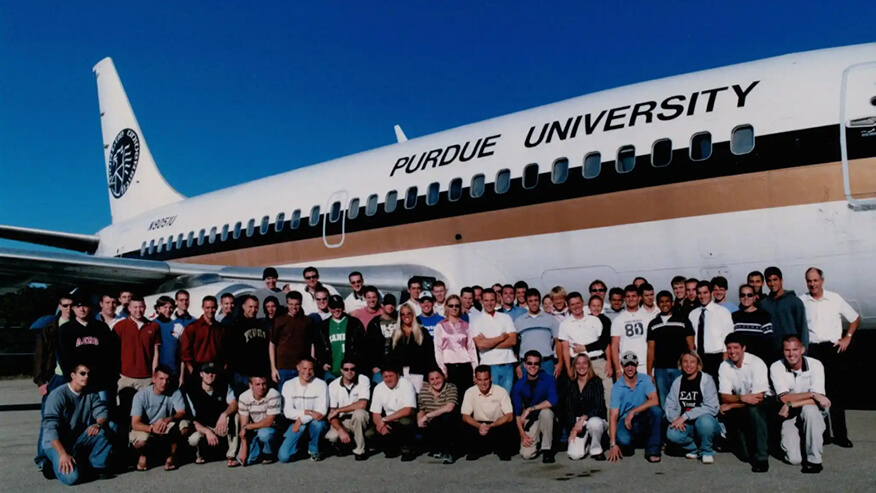
When I meet alumni for the first time, it instantly builds a bond of trust. It’s that link. You go, ‘OK, I know that I can count on you,’ and I think that’s something pretty special.
Q: Boilermakers are known for their persistence. What does persistence mean to you?
A: ‘Persistence’ is a great word that people need to internalize a little bit more. We face adversity all the time. If you’re not facing adversity, you’re probably not doing what you need to be doing. You’re probably not applying yourself hard enough because you should fail. You need to fail. Failure is good. That’s how we learn. That’s how we grow.
I learn when I fail. I did that a lot in college, and it was an excellent molding experience. The ability to get back up and keep going forward is what counts. It’s about shaping the approach differently and continuing the pursuit of something worthy of your time and effort.
I had big goals and wondered how I was ever going to achieve them. But I took it one day at a time and stayed committed. Persistence is not giving up and not settling for less.
